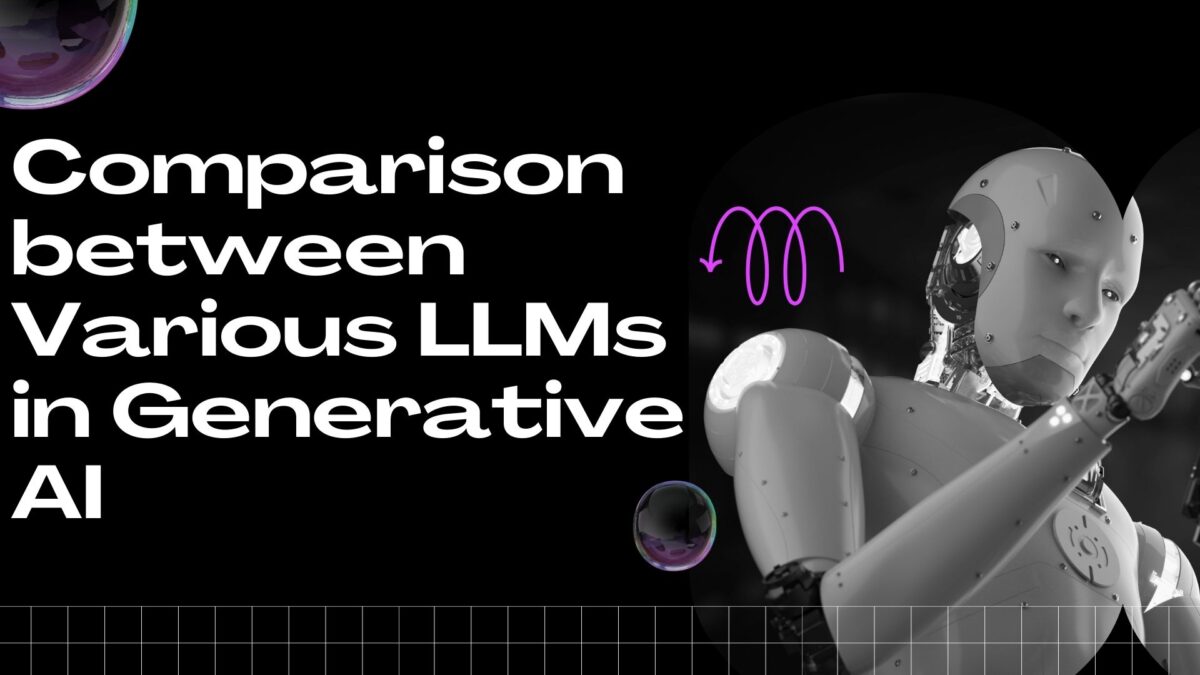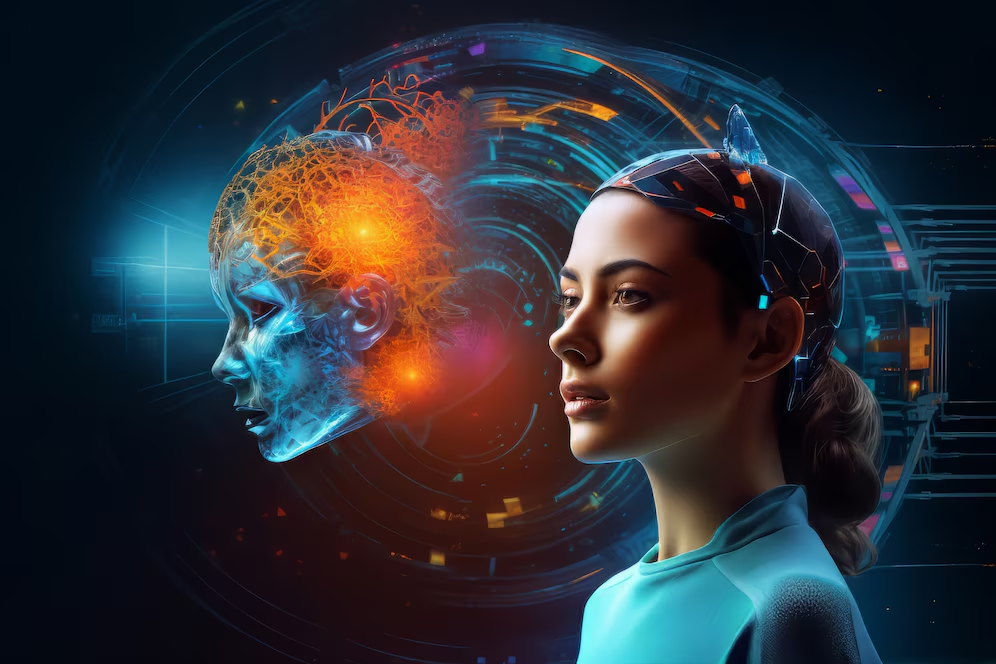Comparison between Various LLMs in Generative AI

Introduction
There have been enormous strides in the field of Generative AI mainly because of the introduction of LLMs. These models have brought the change in natural language processing and understanding and, thus, have made it possible for the machines to generate human resembling texts. As of this created blog, we have the intention to contrast several LLMs in the field of generative AI concerning their characteristics, functions, and effectiveness. Terms like LLMs and LLMs AI active in this field will be bolded throughout to stress their importance.
What are LLMs?
LLMs are deep learning techniques that are trained in the functional capability to natural text utilizing billions of words. They make use of deep learning methods especially the transformer network to forecast and create texts. Specific types of LLMs have uses in text generation, translation, text summarization, question answering and so on.
Evolution of LLMs
The ride of LLMs started with models such as GPT-2 to display the capabilities of transformers on elaborating text. The models following GPT are GPT-3, BERT, T5, and others that have expanded the paradigm and introduced specific breakthroughs.
Critical LLMs in Generative AI
1. GPT-3 from OpenAI.
Overview
The most famous known LLM of the AI is GPT-3 which has been developed by OpenAI. First, it contains 175 billion parameters all through which it is one of the largest and most significant language models to date. They explain that GPT-3 has had a broad exposure to the composition of internet text so that it justifiably provides coherent text that touches the central points of a given topic.
Capabilities
Text Generation: Due to GPT-3’s capability of remembering previous sentences, it is particularly good at writing creative and contextually proper texts ranging from essays to poems.
Question Answering: It can respond to a question according to the context that is given, thus demonstrating a very good understanding.
Translation: In this case, GPT-3 is capable of translating between several languages without many errors.
Summarization: It can easily summarise a large body of texts into a compact version of them.
Performance
On the capability level, GPT-3 rather performs well ensuring that the output generated by itself is almost similar to what an actual human being would write. However, due to its great size and the intensity of computations it is not suitable for every application.
2. BERT
Overview
BERT proposed by Google is another revolutionary LLM that especially incline to capture the meaning of topics in the whole context. While GPT-3 is unidirectional, BERT is bidirectional, and that means BERT reads from left to right and right to left.
Capabilities
Text Understanding: In such operations such as sentiment analysis and named entity recognition, where vast comprehension of text is needed BERT performs best.
Question Answering: It works very effectively and specifically in cases that require answering some questions because this model takes into account the context of the question and the given answer.
Language Inference: It can be fine-tuned to perform a large number of natural language processing tasks which shows its flexibility.
Performance
BERT has established new state-of-the-art results for a number of NLP tasks because of its bidirectional processing and deep context awareness. It is state of the art in many tasks such as question answering and language inference.
3.T5 (Text-To-Text Transfer Transformer)
Overview
T5 was developed by Google Research, and stands out from other similar models in that all NLP problems are posed as text-to-text problems. This translates to the fact that for any task, the input and the output are always string text regardless of the task type.
Capabilities
Text Generation: T5 can perform different tasks, it can translate, summarize and even perform question answering.
Text Classification: It can distinguish between different text categories according to the given context.
Fill-in-the-Blank: T5 can also input words or phrase into a blank sentence by suggesting suitable fill for the blanks.
Performance
The usage of T5 model also has the flexibility to solve the various kinds of NLP tasks through single model. Text-to-text nature makes its fine tuning for different applications relatively easy.
4. RoBERTa (A Robustly Optimized BERT Pretraining Approach)

Overview
RoBERTa proposed by Facebook AI is an enhanced version of BERT which has enhancements in training approach or way and input data. It seeks to improve on BERT by training it with more data and better configurations or hyperparameters.
Capabilities
Text Understanding: RoBERTa also has an enhanced performance in handling contextual information and thus it offers enhanced performance as compared to the BERT model.
Question Answering: In question-answering benchmarks, it gives very good results.
Text Classification: RoBERTa perfectly fits the text classification tasks and yields high-precision and high-reliability scores.
Performance
A latest model called RoBERTa has been reported to perform outstandingly on most of the NLP benchmarks, and as a result has been proven to be very effective in solving complicate language problems.
5. XLNet
Overview
Created by Google AI and based on BERT and autoregressive models such as GPT, XLNet has been developed to be an optimum of BERT. It employs a permutation training regime for pretraining to capture bidirectional context unlike the typical masked language models.
Capabilities
Text Generation: For this reason, XLNet can offer the text that is coherent with the reference text and which is stemmed to the specific context taking into account the bidirectional context.
Language Modeling: It has a great performance even in language modeling tasks compare to several other models.
Text Understanding: The feature of the model that has been emphasized by the authors is its successful use in terms of understanding and working with abstract syntactic relationships in the text.
Performance
XLNet has been trained permutation-based, which helps to achieve good results in different NLP problems and become a worthy opponent for BERT and GPT.
Comparative Analysis
Text Generation
Typing, it also performs brilliantly when it comes to text generation and this it owes it to its massive size and extra pre-training. It can create very imaginative text which specific to certain contexts, thus it is recommended for content generation and writing. Thus, T5 also works fine for generating text although, its prime focus is the unified text-to-text process.
Text Understanding
Understanding and incorporating the context is where BERT and its improved version, RoBERTa shines. Since they are bidirectional, it can incorporate the context of the words it is identifying as well, making it advantageous in tasks such as customer sentiment analysis or even proper identity recognition of persons, places, organisations, etc., in questions answered.
Flexibility and Versatility
Compared to other models, the concept of text-to-text of T5 model gives it the most flexibility to solve many NLP problems. As such, if an application demands several NLP functions, then this is the best option since it contains all these functionalities.
Performance and Efficiency
Although GPT-3 presents high performance, it has two downsides: it is very big and computation demanding. It is important to note that some of the current most performing models like BERT, RoBERTa, and XLNet are less heavy, and therefore serve very well in terms of performance in a setup with limited resources.
Challenges and Future Directions
Computational Resources
In the training and deployment of the LLMs, a considerable amount of computational power is needed which is a limitation to so many organizations. Thus, further investigations should be aimed at improving these models regarding their efficiency and the amount of resources they consume.
Ethical Considerations
Another issue is in connection with LLMs as applied to the creation of generative AI: the generation of malicious or false information. The appropriate usage of these models has to be regulated, and it is up to developers to put measures to prevent people from using them wrongly.
Fine-Tuning and Customization
Pretrained LLMs for language have immense capabilities; however, fine-tuning them on particular purposes and relevance is still a demanding task. The future development should pay attention to how to make the fine tuning easier and how to improve the applicability of these models.
Conclusion
Generative Artificial Intelligence for text generation, understanding and processing was given a new face by the Large Language Models (LLMs). That is why GPT-3, BERT, T5, RoBERTa, and XLNet differ from each other because, for certain reasons, each of them is appropriate. Hence, the future research should consider the issue of computational resources, ethical issues, and the need to achieve fine-tuning of LLMs in the development of AI.
Thus, knowing the differences and strengths of these models, an organization can decide as to which of them, it is suitable to apply in certain context so as to spur on the development of newer and improved generative AI.
Read our Blog – Fx31 Labs partnership with Goodfirms


